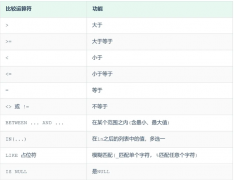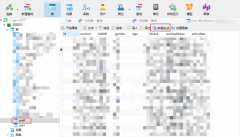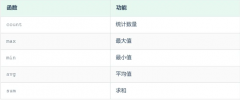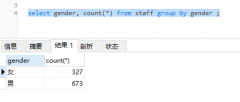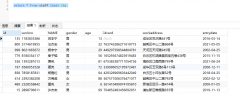Display multiple rows and column values into a single row, multiple column values(将多行多列值显示为单行多列值)
问题描述
I have to show multiple incomes, type of income and employer name values for a single individual in a single row. So, if 'A' has three different incomes from three different sources,
id | Name | Employer | IncomeType | Amount
123 | XYZ | ABC.Inc | EarningsformJob | $200.00
123 | XYZ | Self | Self Employment | $300.00
123 | XYZ. | ChildSupport| Support | $500.00
I need to show them as
id | Name | Employer1 | Incometype1| Amount1 | Employer2 | incometype2 | Amount2| Employer3 | Incometype3| Amount3.....
123 |XYZ | ABC.Inc |EarningsformJob | $200.00|Self | Self Employment | $300.00|ChildSupport| Support | $500.00.....
I need both 'fixed number of columns' (where we know how many times employer, incometype and amount colums are going to repeat)logic and 'dynamic display of columns' ( unknown number of times these columns are going to repeat)
Thanks.
Since you are using SQL Server there are several ways that you can transpose the rows of data into columns.
Aggregate Function / CASE: You can use an aggregate function with a CASE expression along with row_number(). This version would require that you have a known number of values to become columns:
select id,
name,
max(case when rn = 1 then employer end) employer1,
max(case when rn = 1 then IncomeType end) IncomeType1,
max(case when rn = 1 then Amount end) Amount1,
max(case when rn = 2 then employer end) employer2,
max(case when rn = 2 then IncomeType end) IncomeType2,
max(case when rn = 2 then Amount end) Amount2,
max(case when rn = 3 then employer end) employer3,
max(case when rn = 3 then IncomeType end) IncomeType3,
max(case when rn = 3 then Amount end) Amount3
from
(
select id, name, employer, incometype, amount,
row_number() over(partition by id order by employer) rn
from yourtable
) src
group by id, name;
See SQL Fiddle with Demo.
PIVOT/UNPIVOT: You could use the UNPIVOT and PIVOT functions to get the result. The UNPIVOT converts your multiple columns of Employer, IncomeType and Amount into multiples rows before applying the pivot. You did not specific what version of SQL Server, assuming you have a known number of values then you could use the following in SQL Server 2005+ which uses CROSS APPLY with UNION ALL to unpivot:
select id, name,
employer1, incometype1, amount1,
employer2, incometype2, amount2,
employer3, incometype3, amount3
from
(
select id, name, col+cast(rn as varchar(10)) col, value
from
(
select id, name, employer, incometype, amount,
row_number() over(partition by id order by employer) rn
from yourtable
) t
cross apply
(
select 'employer', employer union all
select 'incometype', incometype union all
select 'amount', cast(amount as varchar(50))
) c (col, value)
) src
pivot
(
max(value)
for col in (employer1, incometype1, amount1,
employer2, incometype2, amount2,
employer3, incometype3, amount3)
) piv;
See SQL Fiddle with Demo.
Dynamic Version: Lastly, if you have an unknown number of values then you will need to use dynamic SQL to generate the result.
DECLARE @cols AS NVARCHAR(MAX),
@query AS NVARCHAR(MAX)
select @cols = STUFF((SELECT ',' + QUOTENAME(col+cast(rn as varchar(10)))
from
(
select row_number() over(partition by id order by employer) rn
from yourtable
) d
cross apply
(
select 'employer', 1 union all
select 'incometype', 2 union all
select 'amount', 3
) c (col, so)
group by col, rn, so
order by rn, so
FOR XML PATH(''), TYPE
).value('.', 'NVARCHAR(MAX)')
,1,1,'')
set @query = 'SELECT id, name,' + @cols + '
from
(
select id, name, col+cast(rn as varchar(10)) col, value
from
(
select id, name, employer, incometype, amount,
row_number() over(partition by id order by employer) rn
from yourtable
) t
cross apply
(
select ''employer'', employer union all
select ''incometype'', incometype union all
select ''amount'', cast(amount as varchar(50))
) c (col, value)
) x
pivot
(
max(value)
for col in (' + @cols + ')
) p '
execute(@query);
See SQL Fiddle with Demo. All versions give a result:
| ID | NAME | EMPLOYER1 | INCOMETYPE1 | AMOUNT1 | EMPLOYER2 | INCOMETYPE2 | AMOUNT2 | EMPLOYER3 | INCOMETYPE3 | AMOUNT3 |
-------------------------------------------------------------------------------------------------------------------------------------
| 123 | XYZ | ABC.Inc | EarningsformJob | 200 | ChildSupport | Support | 500 | Self | Self Employment | 300 |
这篇关于将多行多列值显示为单行多列值的文章就介绍到这了,希望我们推荐的答案对大家有所帮助,也希望大家多多支持编程学习网!
本文标题为:将多行多列值显示为单行多列值


- 在SQL中,如何为每个组选择前2行 2021-01-01
- 使用 Oracle PL/SQL developer 生成测试数据 2021-01-01
- 如何使用 pip 安装 Python MySQLdb 模块? 2021-01-01
- SQL 临时表问题 2022-01-01
- 如何将 Byte[] 插入 SQL Server VARBINARY 列 2021-01-01
- 以一个值为轴心,但将一行上的数据按另一行分组? 2022-01-01
- 更改自动增量起始编号? 2021-01-01
- 如何将 SonarQube 6.7 从 MySQL 迁移到 postgresql 2022-01-01
- 导入具有可变标题的 Excel 文件 2021-01-01
- 远程 mySQL 连接抛出“无法使用旧的不安全身份验证连接到 MySQL 4.1+"来自 XAMPP 的错误 2022-01-01
